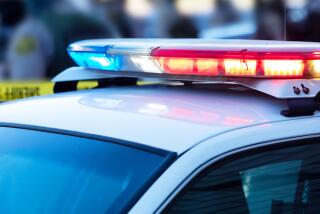When Students Bring Firearms to School : Why zero tolerance, intelligently applied, is necessary
- Share via
Renee Benson would like her teen-age daughter to have a second chance. The 13-year-old student admits she brought a BB gun that looked like a revolver to Lawrence Middle School in Woodland Hills. A “stupid mistake,” says her mother, “but sometimes children of 13 make stupid mistakes.” Benson’s daughter has since been expelled from the Los Angeles Unified School District; her mother is asking the district to reconsider its action.
Vickie Yates’ 14-year-old son admits he knew there was a 9-millimeter handgun in his locker at Wright Middle School in Westchester, but contends that the gun belongs to his best friend. The district is still considering whether to expel him. Yates’ mother wants her son to remain in school and is challenging the district’s zero-tolerance policy for guns as unnecessarily harsh.
The mothers of Michael Ensley and Demetrius Rice would probably like their sons to have a second chance as well. At life. But because of guns on school campuses, neither will get one. Ensley, 17, was shot dead by a classmate during a snack break at Reseda High School in February, 1993. Rice, a 16-year-old student at Fairfax High, was slain a month earlier when a classmate accidentally fired a .357 magnum during an English class.
Ensley and Rice are just two reasons why the LAUSD must hold firm to the policy it adopted 15 months ago of zero tolerance for guns. Now, students found in possession of firearms are in most cases expelled. They are out for the remainder of the semester and the following semester. Then they can reapply. Previously such students were reassigned to other district schools.
Yes, the district policy is harsh. But it has to be because schools have become deadly places. During the 1993-94 school year, since the policy has been in effect, Los Angeles school officials recovered 127 guns on school grounds and expelled or transferred 166 students for bringing guns to school. Horrific as these figures are, they represent an improvement over 1992-93 when 168 guns were recovered and 256 students were expelled or transferred for gun possession.
Other state school districts, including some in Orange County, have adopted a similar zero-tolerance policy for weapons on campus. In one, Fountain Valley, 15 students were expelled in the most recent school year, although in one case an elementary student who brought a Swiss army knife to school was allowed to transfer to another school in the district.
The state law governing expulsions is less severe than district policies in Los Angeles and Orange counties. As in many other states, California law allows districts either to expel or transfer students. But the mandatory expulsion policies in effect locally, rather than the more lenient state law, should become the norm in California and elsewhere. Sen. Dianne Feinstein (D-Calif.) has sponsored legislation that would deny federal assistance to schools that do not require expulsion of students found with firearms on campus. Her bill now allows some flexibility on expulsion on a case-by-case basis. This provision is currently part of the larger Elementary and Secondary Education Act, which awaits Senate action.
Both Feinstein’s bill and the L.A. district’s zero-tolerance policies allow school officials enough latitude to protect innocent students. For example, students who discover that classmates have, as a prank, planted a gun in their backpack or locker will not warrant expulsion. But when due process has been served, the needs of students to be safe in school must continue to take precedence.
More to Read
Sign up for Essential California
The most important California stories and recommendations in your inbox every morning.
You may occasionally receive promotional content from the Los Angeles Times.













